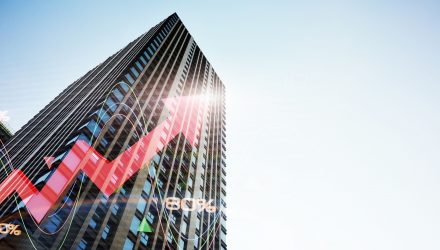Some wary investors are looking to the increased volatility and a long-held recession indicator as signs of a pending turnaround in the market bull trend. The worries may be overblown as a strong economy may continue to sustain the stock exchange traded fund rally.
Year-to-date, the Invesco QQQ Trust (NASDAQ: QQQ) increased 14.5%, SPDR Dow Jones Industrial Average ETF (NYSEArca: DIA) gained 3.9% and SPDR S&P 500 ETF (NYSEArca: SPY) rose 6.4%.
However, some traders are worried that a flattening yield curve may signal that a recession is right around the corner. The yield curve or difference in yields between short- and long-term government debt has narrowed to a near 11-year low in recent months, stoking fears that the U.S. economy may slip into a slowdown.
Yields on 2-year U.S. Treasury notes are now at around 2.67% while yields on benchmark 10-year notes are at 2.98%.
Over the last five decades, a recession has followed every time the yield on two-year Treasuries exceed that of the 10-year notes in a condition more commonly known as an inverted yield curve.
However, Credit Suisse argued that stocks often continued to push higher several months after the yield curve inverts, reports Akane Otani for the Wall Street Journal.
More Room to Run for U.S. Bull Market?
Credit Suisse analysts found that since 1978, the S&P 500 has gained 16% in the 18 months following an inversion of the yield curve. U.S. equities have also strengthened over longer time periods, rising an average 14% in the 24 months following a yield curve inversion and advancing 9.5% om the following 30 months. The pattern suggests that the U.S. bull market may have more room to run.
